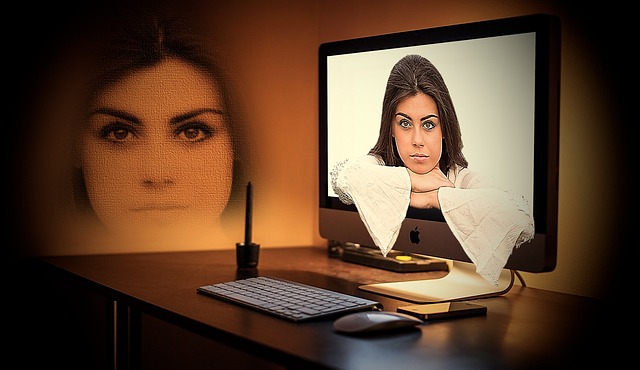What is website design business; Branding always plays an effective role in promoting and expanding…

Complete Guide to Taking Graphics Design
Complete Guide to Taking Graphics Design. Now, if you are looking for free graphics design courses online or offline or how to become a graphic designer. Then, this article is for you. Nowadays, the demand for graphic design is constantly increasing in the job market Those who have these two skills in graphic design and computer fundamentals are many times ahead of others. Almost all of us want to learn graphic design, but do we all get the opportunity to learn?
Somewhere may not match the budget, and if you want to learn from any institution, then it can be seen that the transportation system is not very convenient. Everyone is stuck at home during this lockdown, so learning graphic design online is not too bad at this time. Better if you can learn it online for free.
Graphics Design Course
In this post you will get basic idea about graphic design. You will also get detailed information about graphics design courses, some free graphics design software. So, why the delay? Let’s begin.
What is graphics design?
Graphic design is a visual art. Graphics design is to visually convey the message of a product, project, or event to customers or visitors through various images, music, videos, or text. Since the task is to convey the message, it can also be called communication design.
The uses of graphics design can be of various types For example, advertising is needed to promote a product. A website can be promoted through infographics (infographics are visual representations of information). Again, to promote a brand, graphics have to be designed accordingly.
Elements of graphic design
If you want to learn graphic design, you first need to know and understand its elements well. As I said earlier, graphic design tries to convey a message visually. So proper use of design elements is essential for successful delivery of the message. In this section we will go into detail about those components.
1. Color in graphic design
Know all the details of color types, uses, and applications It is especially important to know the psychological uses of color. such as
- Black color is an indication of evil, and black color is a sign of AIDS.
- Pink color is the color of love, again this same color means health, pink color is also associated with breast cancer.
- Red color means blood, danger, sacrifice, love, anger, anger, etc., and when you see red color, blood donation program comes to mind first.
Again, the use of bright or dull colors can express different meanings. So it goes without saying that the psychological use of color accelerates message creation and delivery.
2. Line in graphic design
It is the simplest and most important element. Lines can be of different types (straight, curved, thick, thin). Lines can also be two-dimensional or three-dimensional. Depending on the type of line, the importance of the message may vary.
Shapes are made of lines. It is a two-dimensional area. Designs can be made with geometric shapes like circle, square, rectangle etc It is also possible to make designs with irregular shapes. Designs with geometric shapes carry one meaning, while designs with shapeless shapes carry a different meaning.
4. Typography in graphic design
Typography basically refers to the arrangement of letters. Message effectiveness depends on font size, font color, font spacing. Typography is most important to convey a message easily and effectively to the audience in a short period of time.
5. Size in graphic design
Message meaning varies by size. In graphics design, larger size means more important and smaller size means less important. A different kind of meaning is created when there are large and small sizes side by side.
6. Space in graphic design
This is another important element. How effective a message is depends on how the elements are arranged in a design. A designer can arrange his design elements left, right, center, or diagonally. Proper spacing adds a different dimension to the design.
7. Texture in graphic design
Texture basically refers to texture. Texture in graphic design refers to how something visually feels. For example, the use of color in an image is done in such a way that the image appears rough or smooth. The real purpose of using texture is to draw attention.
Techniques for designing graphics
In the previous section we learned about the use of elements Now we will know about their arrangement. The message is effective when the design elements are arranged correctly. There are certain rules to be followed to arrange this properly –
1. Balance in graphic design
Maintaining a balance is important to structure a design. To maintain balance, lines, shapes, and other elements must be equal in size. Even if the elements on two sides of a design are unequal in size, it will not be a problem if the elements are the same.
2. Alignment in Graphics Design
Alignment refers to whether the design is aligned properly. Design elements should be arranged on top/side/center in such a way that they create a visual connection with each other.
3. Proximity in graphic design
Proximity refers to creating a visual relationship between design elements. It does not mean that the elements must always be arranged in the same way, even if they are randomly arranged, but care must be taken to create a visual connection between the elements, or that they are visually related.
4. Repetition in Graphics Design
Repeated use of design elements creates a sense of continuity in the design. Linearity accentuates the atmosphere of the design.
5. Contrast in graphic design
Contrast is used to show difference or comparison. The use of contrast is seen in the case of colors, lines, fonts etc. Contrast is used to highlight the difference between different elements, or any one or two things.
Types of graphic design
- Corporate Design
Corporate design refers to company related design. For example, creating company logos, brand marketing, etc.
- Marketing and Advertising Design
Social media includes graphics, billboards, brochures, email marketing, content marketing, etc.
- Publication design
Design work related to print media. It also includes digital publication work. For example, books, newspapers, pamphlets, newsletters, magazines, e-zines, e-books etc.
- Environmental Design
Environment or eco-design. It includes various visual elements related to the environment. Such as ‘plant trees to save the environment’ or ‘no smoking’ etc. Various roadsigns, or environmental installations or murals etc. also fall under environmental design.
- Packaging design
Refers to packaging design. Like labels, stickers etc.
- Web design
Web design is the process of creating a website. While creating a website, lay-out, images, typography, content etc. need to be given special attention.




This Post Has 0 Comments